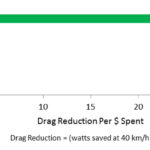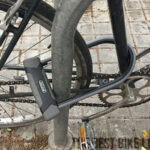Choosing the right bike seat is crucial for enjoyable and safe family cycling adventures. With numerous options available, finding the Best Bike Seat for your child can feel overwhelming. This guide dives into the features, safety considerations, and practical aspects of child bike seats, with a focus on front-mounted models like the Tyke Toter. We’ll explore what makes a bike seat great, discuss potential drawbacks, and help you determine the ideal choice for your family’s needs.
When it comes to cycling with young children, the market offers a variety of bike seat styles. Rear-mounted seats are a common choice, attaching behind the adult rider. Frame-mounted seats provide another rear option, offering stability. However, front-mounted bike seats have gained popularity for placing the child in front of the parent, fostering interaction and providing a better view for the little passenger. Among these front seats, the Tyke Toter stands out with its unique design and features, which we will examine in detail.
What to Look for in a Bike Seat
Before diving into specific models, understanding the key features of a good bike seat is essential. The best bike seat prioritizes several factors:
- Safety: This is paramount. Look for seats with secure harnesses, sturdy construction, and features that minimize risks. Foot straps or enclosures are vital to prevent feet from getting caught in wheels, a critical safety consideration.
- Comfort: A comfortable seat makes for a happy child and longer rides. Padded seats, good back support (if applicable), and a comfortable riding position contribute to a positive experience.
- Ease of Installation and Use: Parents need a bike seat that is straightforward to install and remove. Quick-release mechanisms and compatibility with various bike types add convenience.
- Age and Weight Range: Ensure the seat is appropriate for your child’s age and weight. Front-mounted seats typically have lower weight limits and age ranges than rear-mounted options.
- Durability and Build Quality: A well-constructed seat will last through years of use and potentially multiple children. Look for durable materials and solid construction.
Tyke Toter Review: Is it the Best Front Bike Seat for You?
The Tyke Toter presents a unique approach to front-mounted child bike seats. Unlike many models with full harnesses and backrests, the Tyke Toter is a minimalist seat and handlebar mounted on a post that attaches to the bike’s seatpost. Marketed for children aged 2 to 5, it aims to extend the usability of front bike seats beyond the typical age 3 limit.
Overview of Tyke Toter
The Tyke Toter distinguishes itself with its simplicity and focus on older toddlers and preschoolers. Its open design and handlebar encourage a more interactive riding experience for the child. The seat’s easy installation is a significant selling point, appealing to parents seeking convenience. However, its minimalist nature also raises safety considerations, particularly regarding foot entrapment in the front wheel.
Pros of Tyke Toter
-
Easy Installation: The Tyke Toter’s quick-release clamp system is remarkably user-friendly. It attaches to the seatpost in minutes without tools and leaves no hardware on the bike when removed. This ease of installation sets it apart from seats like the iBert or Yepp Mini, which mount to the headset, or those requiring more permanent modifications.
-
Affordability: Compared to many other bike seats on the market, the Tyke Toter is often more budget-friendly, making it an attractive option for families seeking value.
-
Wider Age Range: Designed for children up to age 5, it accommodates older toddlers and preschoolers who may have outgrown typical front-mounted seats designed for younger children.
-
Fun and Engaging: Children often love the Tyke Toter. The handlebar gives them a sense of control and involvement, making bike rides more engaging and enjoyable for both parent and child. Being positioned upfront allows for easy interaction and shared experiences during rides.
Cons and Safety Concerns
-
Safety Concerns – No Foot Straps: The most significant drawback of the Tyke Toter is the lack of foot straps or any foot retention system. Children’s feet rest on foot pegs attached to the bike’s downtube. This design relies entirely on the child’s ability to keep their feet securely on the pegs and away from the front wheel.
-
Risk of Foot Entrapment: As highlighted in the original review, there is a documented risk of children getting their feet caught in the front wheel with the Tyke Toter. This is especially concerning for younger children (2-3 years old) or those who are naturally wiggly or less likely to consistently follow instructions to keep their feet still.
Installation and Build Quality
The Tyke Toter excels in installation simplicity. The quick-release clamp is intuitive and efficient. The seat’s construction is solid, featuring an alloy seat post and a durable plastic and hard foam seat. The manufacturer offers a lifetime warranty, reflecting confidence in the product’s durability. Spare parts are also available, adding to the seat’s long-term usability.
Real-World Experience and Update
Real-world experiences, including the reviewer’s own incident, underscore the safety considerations of the Tyke Toter. While many families use it without issue, the risk of foot-wheel accidents is real, particularly with younger or less attentive children. The reviewer’s update, after six months of continued use following an accident, emphasizes the importance of parental vigilance and the child’s ability to cooperate in keeping their feet safe. Using the seat on a larger-framed bike where the child’s feet are further from the front wheel can also mitigate risk.
Who is the Tyke Toter Best For?
The Tyke Toter may be a good option for families with:
- Older Toddlers and Preschoolers (3-5 years): Children in this age range are more likely to understand and follow instructions to keep their feet on the pegs.
- Well-Behaved and Attentive Children: Kids who are generally good at following directions and less prone to sudden movements are better suited for a seat without foot restraints.
- Parents Prioritizing Easy Installation and Fun: If ease of use and an engaging riding experience are top priorities, and parents are confident in their child’s ability to stay safe, the Tyke Toter can be a good choice.
However, it’s crucial to acknowledge that the Tyke Toter may not be the best bike seat for everyone, especially those prioritizing maximum safety features for younger or more active toddlers.
Alternatives to Tyke Toter
For parents seeking front-mounted seats with enhanced safety features, alternatives like the Mac Ride, mentioned in the original article, offer foot straps to secure the child’s feet. Rear-mounted seats, while changing the parent-child interaction dynamic, generally offer more enclosure and safety features, often including harnesses and foot enclosures. Frame-mounted seats also provide a rear option with potentially different stability characteristics. Exploring different types of bike seats and comparing features is essential to finding the best bike seat for your specific family and child.
Conclusion: Choosing the Best Bike Seat for Your Family
Selecting the best bike seat involves carefully weighing safety, convenience, your child’s age and temperament, and your family’s cycling style. The Tyke Toter offers a unique blend of easy installation, affordability, and fun for older toddlers and preschoolers. However, its lack of foot restraints necessitates careful consideration of safety, particularly for younger or more active children. Ultimately, the ideal bike seat is the one that best balances your priorities and ensures safe and enjoyable bike rides for your whole family. Always prioritize safety and choose a seat that you are confident will keep your child secure and comfortable on every ride.


